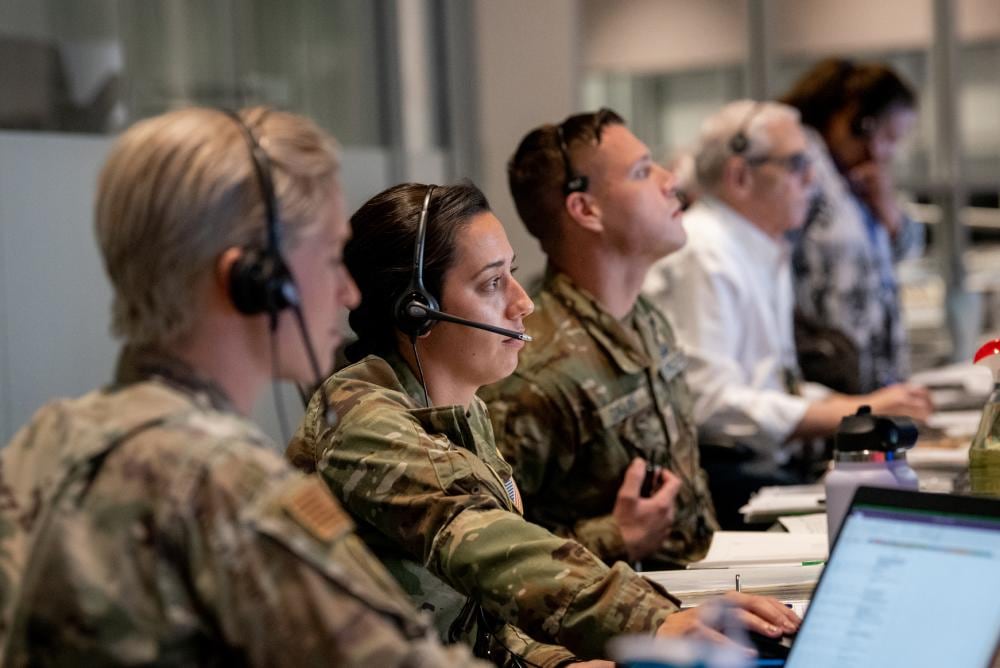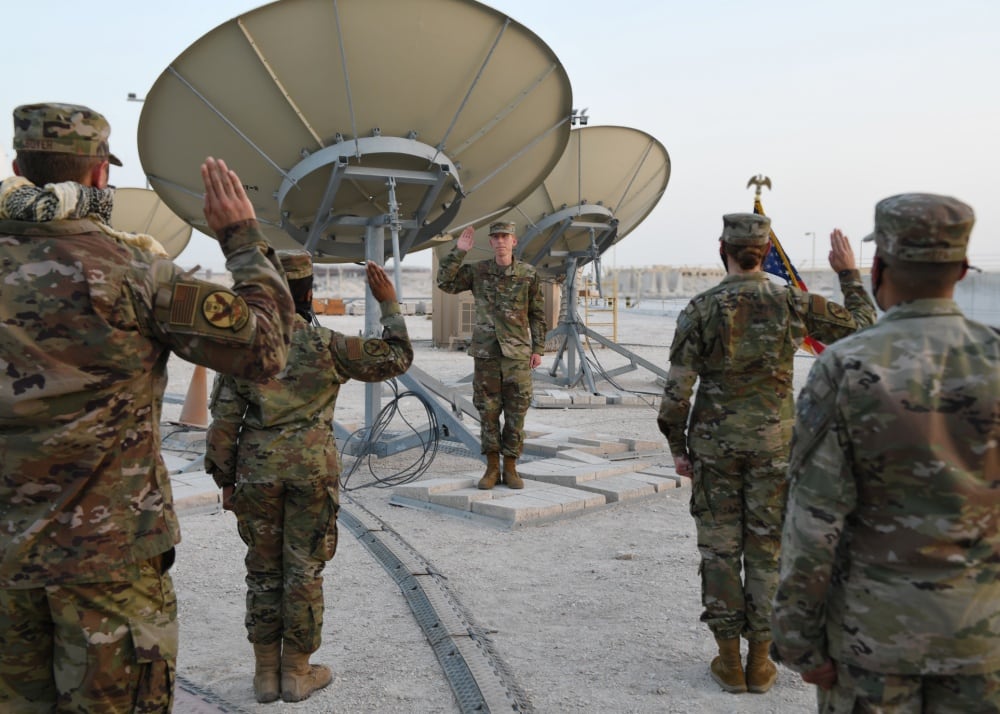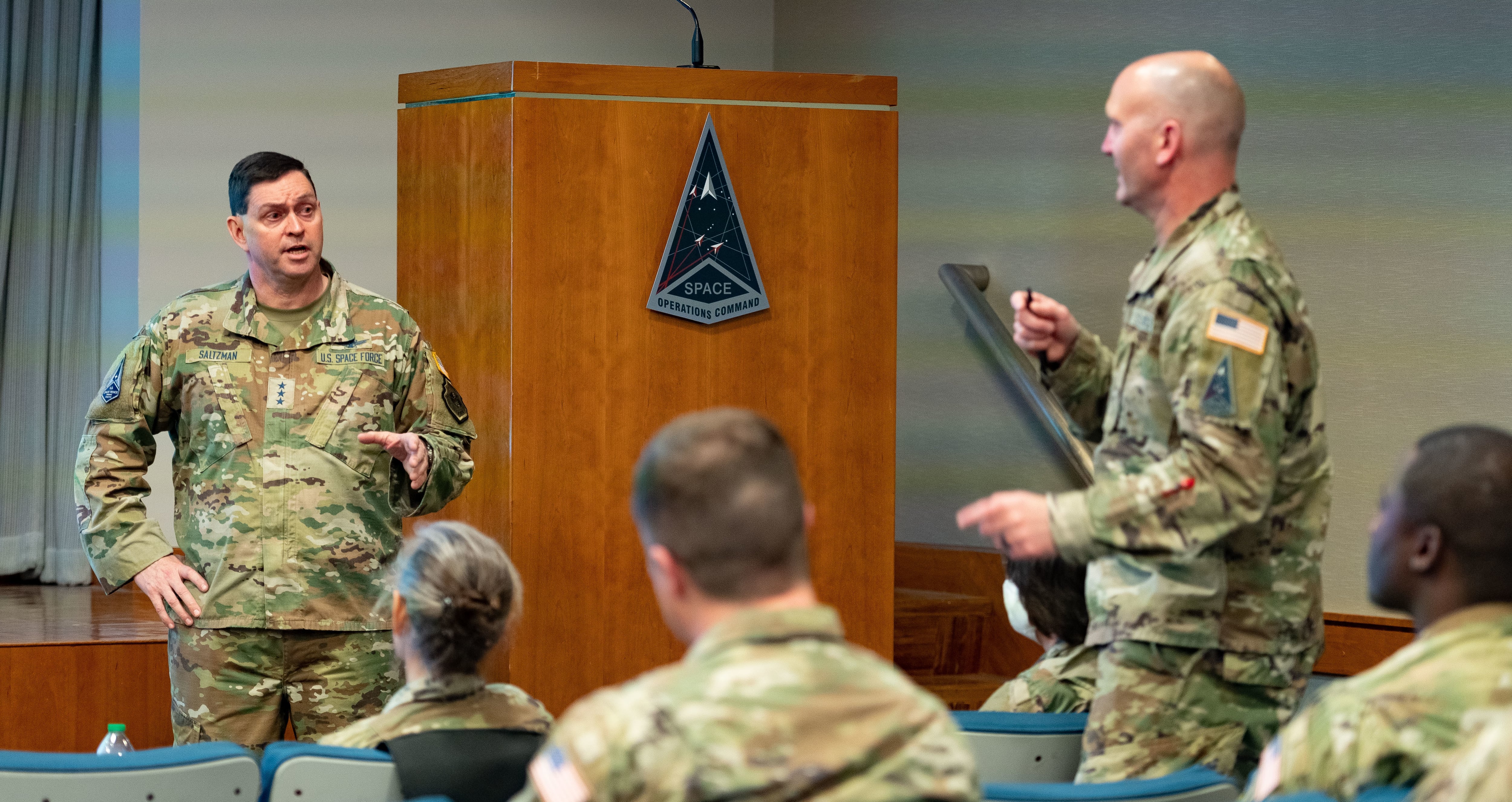The Space Force on Tuesday opened a regional command center at Joint Base Pearl Harbor-Hickam, Hawaii, to manage military space operations across the Indo-Pacific.
U.S. Space Forces Indo-Pacific is the first in a string of new component commands that will become the service’s main touchpoints around the world.
Brig. Gen. Anthony Mastalir, the former commander of Space Launch Delta 30 (previously the 30th Space Wing) at Vandenberg Space Force Base, California, and head of space forces in Air Forces Central Command, will serve as the organization’s first commander.
RELATED

“Space underpins every aspect of warfighting here, where we must overcome the tyranny of distance on a daily basis, where space enables access to otherwise denied areas, to increase range and lethality of our weapon systems, and where space is key to our ability to project power at the time and place of our choosing,” Mastalir said.
It’s the first time that the U.S. military will have a staff solely focused on incorporating satellite- and radar-based surveillance, target tracking, communications and more in the Indo-Pacific.
That work was previously handled by air component commands like Pacific Air Forces and U.S. Air Forces in Europe.
Space-focused component commands have been in the works for two years as the Space Force builds out its own warfighting enterprise.
RELATED

The Indo-Pacific region took precedence because it is home to the most pressing national security threats facing the United States: the Chinese, Russian and North Korean militaries as well as a network of terror groups.
A central mission for Space Force guardians in the Indo-Pacific will be to safeguard American assets in orbit from physical and digital attack — particularly from China.
“Space must be deeply integrated with the rest of the joint team,” Chief of Space Operations Gen. B. Chance Saltzman said at the command’s activation ceremony Tuesday.
He added of China: “This is never more true than in this [region], where we find ourselves competing against a thinking adversary who continues to field counter-space systems as well as their own exquisite, space-based support systems for their increasingly capable terrestrial forces.”
INDOPACOM boss Adm. John Aquilino credited the Space Force for enabling the “complete synchronization” of American military forces across the vast Pacific Ocean in the face of those challenges.
RELATED

In his new role, Mastalir will report to Aquilino to offer space capabilities as part of the menu of options available for peacetime or combat missions.
The Space Force organizes, trains and equips troops to operate and maintain space systems from satellites to rocket launch facilities. It then provides those resources to a combatant command through its respective component, like it will do for INDOPACOM through Space Forces Indo-Pacific. Leaders within the combatant commands then execute daily missions using those available resources.
Saltzman told reporters earlier this year that U.S. Central Command and U.S. European Command are next in line for their own space component commands.
When each might come to fruition remains unclear; Saltzman said the timelines are fluid because of the myriad steps involved for planning and approval. The service previously said CENTCOM would be the first to get that dedicated space support, but the order has shuffled around since then as priorities have shifted.
That work will continue as the Space Force passes its third birthday next month. Its workforce has grown to about 16,000 uniformed and civilian personnel but remains the smallest military branch by far.
“You are the guardians of INDOPACOM,” Mastalir said. “You are outranked and outnumbered by every other component here. I don’t care.”
“I expect you to be confident and bold. I expect you to uphold the ‘Guardian Ideal,’ character of the highest order, connection to the joint force, our allies and partners, commitment to your mission, and courage to explore the new and innovative ways we will need to integrate your expertise into this fight,” he said.
Rachel Cohen is the editor of Air Force Times. She joined the publication as its senior reporter in March 2021. Her work has appeared in the Washington Post, the Frederick News-Post (Md.), Air and Space Forces Magazine, Inside Defense, Inside Health Policy and elsewhere.








